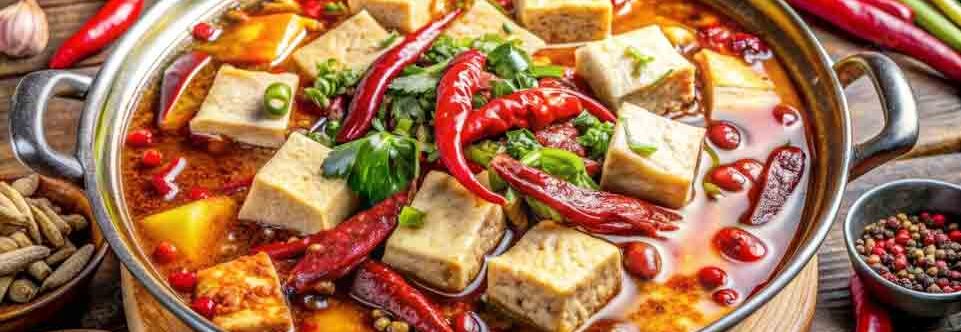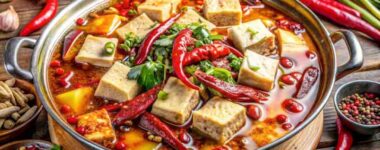Latest News
Share this post:
China’s culinary landscape is as vast and varied as its geography, history, and culture. Spanning over 5,000 years and encompassing countless ethnic groups and regional identities, Chinese cuisine is not a monolith—it’s a collection of richly distinct traditions. Each province brings its own flavours, techniques, and ingredients to the table. Among the most iconic of these are the “Eight Great Cuisines” of China: Sichuan, Cantonese, Shandong, Jiangsu, Zhejiang, Fujian, Hunan, and Anhui. And while each has its passionate devotees, Sichuan cuisine—fiery, fragrant, and fiercely flavourful—tends to steal the show.
The Soul of Sichuan
Hailing from the southwest, Sichuan cuisine is arguably the boldest of the bunch. The hallmark? That unmistakable mala (numbing and spicy) sensation brought about by the marriage of dried chillies and the famed Sichuan peppercorn. This isn’t just heat for heat’s sake—it’s a layered, complex interplay of flavours: salty, sour, sweet, bitter, and pungent.
Sichuan chefs are masters of contrast and texture. Dishes like mapo tofu, kung pao chicken, and twice-cooked pork (huí guō ròu) showcase their knack for balancing fire with finesse. And don’t be fooled into thinking it’s all about spice. There are over 20 recognised flavour profiles in Sichuan cooking, from yuxiang (“fish-fragrant”—ironically, not involving fish) to guaiwei (“strange flavour”), each carefully calibrated.
Historically, Sichuan’s humid, basin-like climate encouraged the use of spice and pickling as both a preservative and a palate stimulant. Buddhist vegetarianism also played a role, giving rise to some truly ingenious meat-free dishes long before plant-based became a buzzword.
The Tuatara Tours fully guided (with local expertise) journey through Sichuan and Lower Tibet allows adventurers to enjoy the exquisite delights of the cuisine from this area.
The Delicacy of Cantonese
By contrast, the cuisine of Guangdong province—more commonly known to the world as Cantonese—is about subtlety and freshness. This is the China of dim sum, roast duck, and congee. Ingredients are barely masked, and the emphasis is on letting the natural flavour shine through. It’s also the most internationally recognised Chinese cuisine, thanks in part to the early emigrants from the region who carried their recipes to Chinatowns around the world.
The Breadbasket of the North
Shandong cuisine, from the northeastern coast, is known for its hearty wheat-based staples, like noodles and dumplings, and for its liberal use of salt and vinegar. Think rich broths and crisp, fried seafood. This is robust fare for a region with cold winters and rugged seas.
East Coast Elegance
Along the Yangtze River Delta, you’ll find Jiangsu and Zhejiang cuisines, which prize delicate knife skills, gentle cooking methods, and sweet-savoury balances. Suzhou’s sugary sauces and Hangzhou’s famed West Lake vinegar fish reflect a refined palate nurtured by centuries of imperial patronage.
Fujian cuisine, another coastal gem, is soup-rich and seafood-heavy, with an emphasis on umami and aroma. Here, Buddhist and Taiwanese influences mingle, producing dishes that feel both light and soulful.
Spice and Soul from Hunan
Often mistaken for its western cousin Sichuan, Hunan cuisine brings the heat in its own right—though it’s a dry, punchy heat rather than the tingling mala. Known for its smoky cured meats and sour pickles, Hunan’s food is rustic, satisfying, and unmistakably bold.
Wild and Earthy Anhui
Anhui cuisine, perhaps the least internationally known, draws from the mountains and forests of inland China. It favours wild herbs, mushrooms, and slow-braising techniques. It’s country cooking at its most poetic—humble, hearty, and tied deeply to the land.
One Country, Many Palates
While Sichuan continues to capture imaginations (and singe tongues) worldwide, every province offers a portal into a different China. To eat across China is to take a journey through climates, dialects, dynasties, and dreams. It’s a mosaic of spice and subtlety, of boldness and restraint—served one delicious dish at a time.
Has this article made you hungry and you might want to visit and try it for yourself. Click Here


 Collecting and Propagating Seeds
Collecting and Propagating Seeds China on a Plate: The Flavours of a Nation (with a Spotlight on Sichuan)
China on a Plate: The Flavours of a Nation (with a Spotlight on Sichuan) Kinesiology Cross Patches
Kinesiology Cross Patches Camaraderie On a Walking Tour…
Camaraderie On a Walking Tour… How E-Biking Has Transformed Biking Tours
How E-Biking Has Transformed Biking Tours







